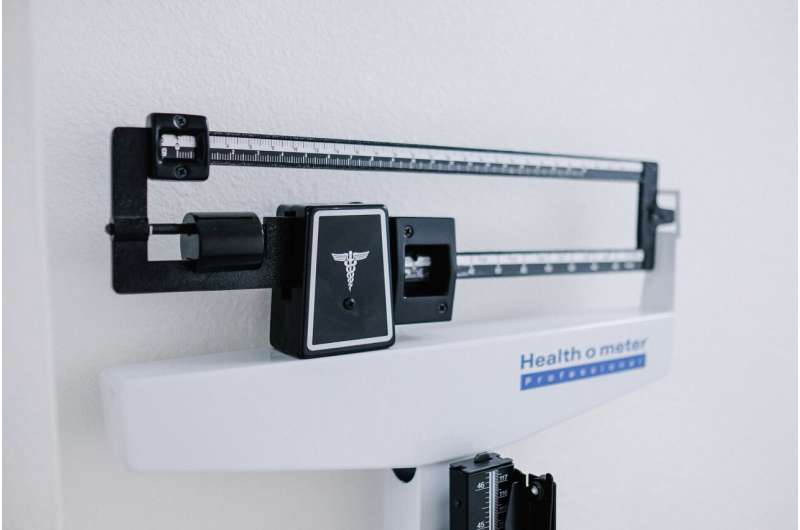Credit: Unsplash/CC0 Public Domain
National guidelines have been released for the first time to help health professionals better support people with higher weight and living with eating disorders.
Developed by eating disorder experts including researchers, clinicians and people with lived experience, in partnership with the National Eating Disorders Collaboration, the guidelines were published in the Journal of Eating Disorders.
Guidelines co-author, Associate Professor Leah Brennan at La Trobe University's School of Psychology and Public Health, said the vast majority of people with eating disorders are not thin, which needs to be better understood by clinicians and the community.
"While the stereotypical image of someone with and eating disorder is a young, white, female who is very thin, the reality is that eating disorders affect people of all ages, cultural groups, genders and body weights," Associate Professor Brennan said.
"Because there has been little understanding or recognition of that, eating disorders experienced by people with higher weight have been consistently undertreated, and there has been little to guide clinicians in the management of this group."
Eating disorder behaviors might include binge eating, loss of control of eating, grazing, emotional eating, use of laxatives, purging, driven or compulsive exercise, and dietary supplements use or abuse, and are associated with concerns about weight and/or shape
Associate Professor Brennan said a lack of understanding by health professionals, and weight stigma within the community, can both play a role in people with higher weight not having their symptoms detected or treated.
"I encourage anyone who is distressed by their eating behaviors and thoughts about eating, or other weight control behaviors or thoughts to seek treatment, regardless of their weight," Associate Professor Brennan said.
"It's such a shame to see people living with an eating disorder and the impacts it has on their life for many years, sometimes a lifetime, when safe, effective, relatively short-term eating disorder treatments are available."
The guidelines recommend that cognitive behavior therapy or family-based therapy, be used as first line treatments for those with higher weight.
They also highlight the importance of considering the eating disorder when prescribing other kinds of treatment.
The guidelines have undergone extensive review and consultation over an 18-month period including reviews by experts and organizations with clinical, academic and lived expertise.
Some of the key recommendations in the guidelines
- All treatment should be provided in the context of interprofessional collaborative practice
- Psychological treatment should be offered as first-line treatment approach for bulimia nervosa or binge-eating disorder
- Consider using psychotropic medications with evidence in the treatment of eating disorders
- Physical activity interventions should focus on physical activity for positive physical and mental health benefits and away from exercising for weight or shape change
- Include families and other caregivers when indicated for anyone with an eating disorder
- Nutritional/medical guidance should minimize language that can reinforce poor self-worth and contribute to worsening eating disorder behaviors
- Irrespective of body size, addressing malnutrition and poor diet quality is essential
More information: Angelique F. Ralph et al, Management of eating disorders for people with higher weight: clinical practice guideline, Journal of Eating Disorders (2022). DOI: 10.1186/s40337-022-00622-w
Provided by La Trobe University






















